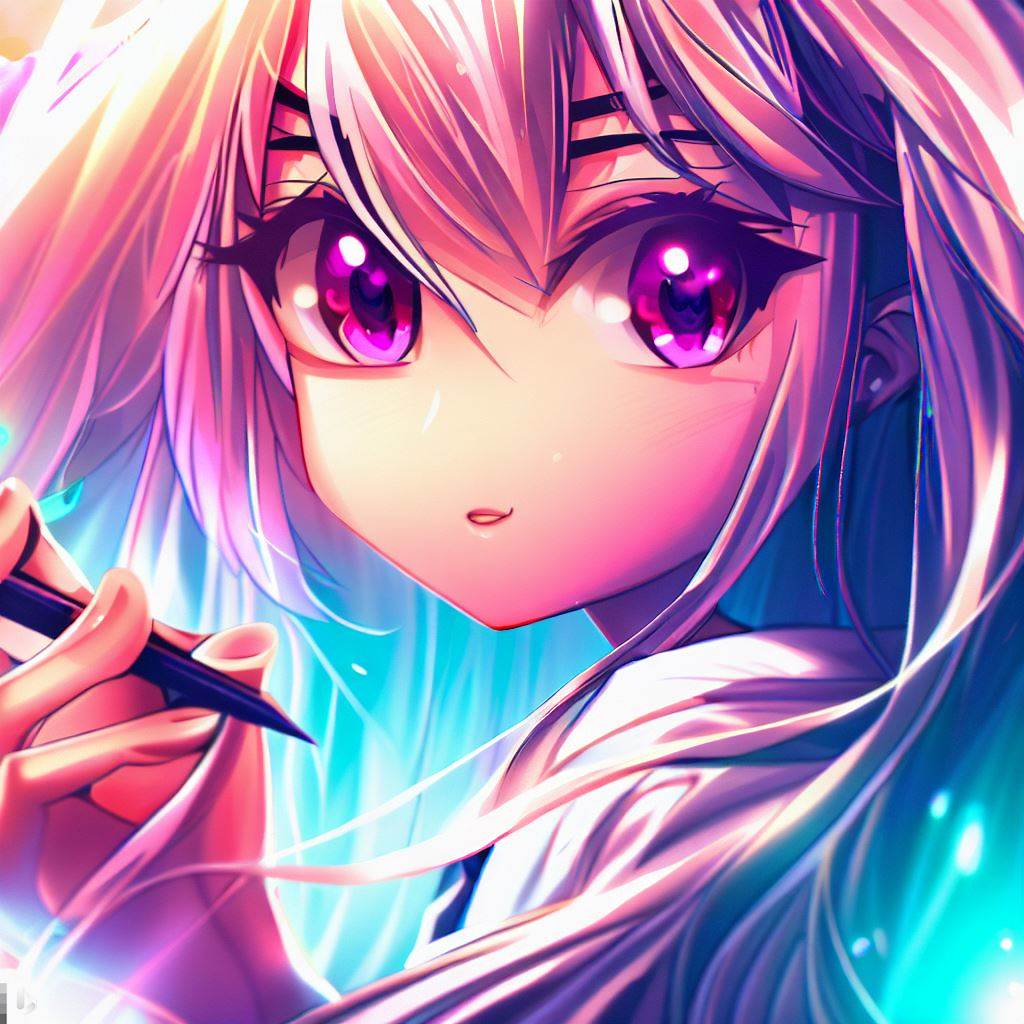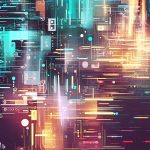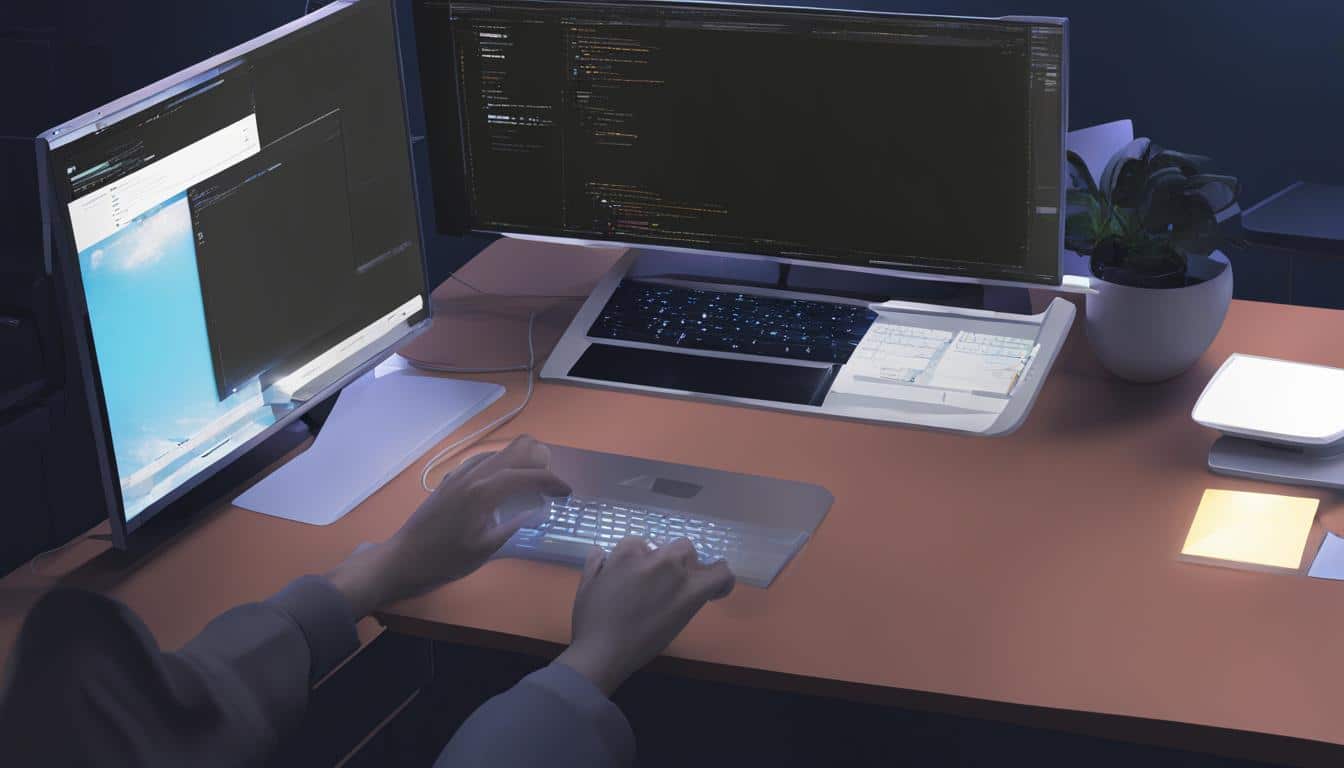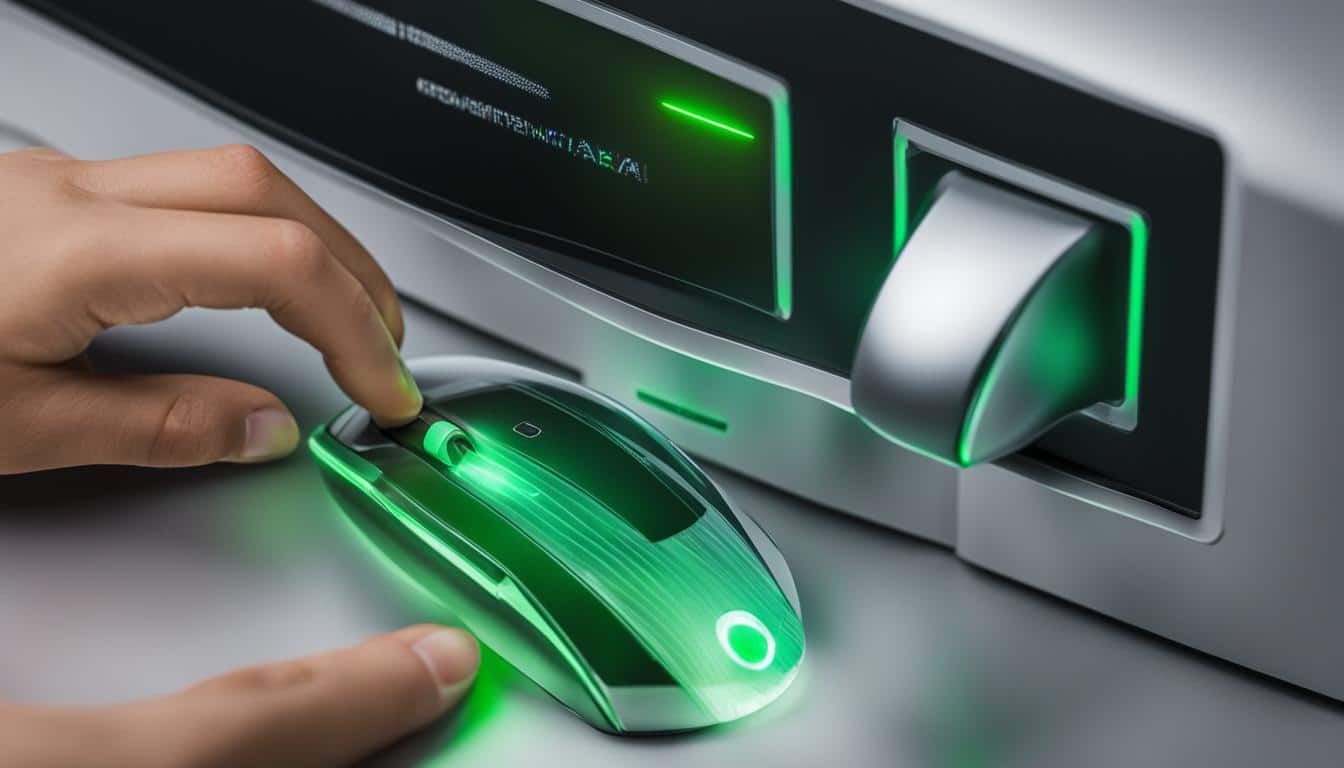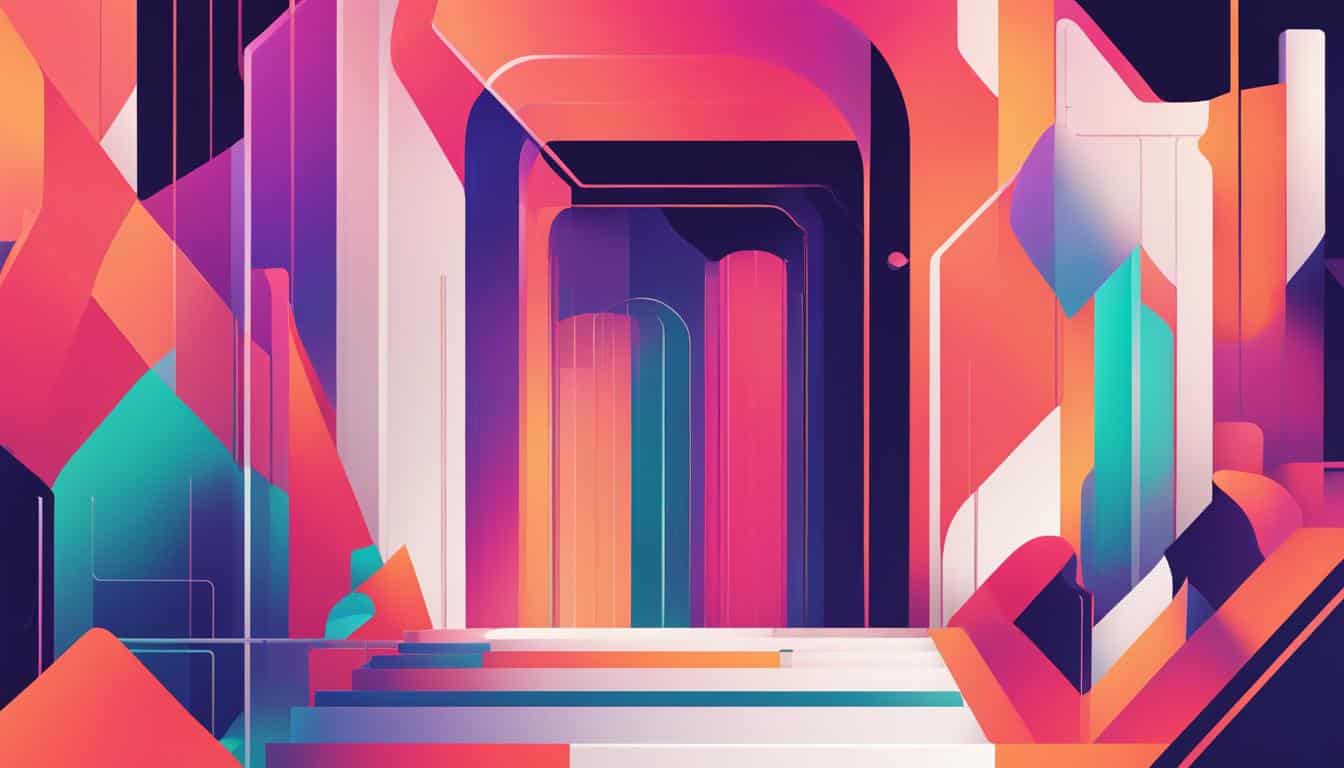Understanding Anime Style in Digital Art
Anime Style is an influential style of art in digital media across the globe. The key elements in Anime Style are its exaggerated features, vivid colors, and emotive expressions. To create Digital Art with an Anime Style, one needs to focus on elements like shape, proportion, and composition while using appropriate software tools. By practicing the principles of character design and animation, artists can develop their unique style while creating their artwork in a traditional or contemporary approach.
Anime Artworks designed digitally can be characterized by elements such as contrasted shades, heightened facial emotions, and an emphasis on line work details. These artworks may feature stylized hair and clothing while keeping basic color shading techniques in mind for portraying depth within the artwork. Rendering textural details and light sources can give the drawings a realistic look.
One distinctive feature of anime is its use of various camera angles and motion curves within frames along with musical tones that add mood to the scenes. It’s also important to incorporate storytelling elements into anime artwork for it to create a greater impact on audiences worldwide.
A Japanese artist named Haruki Murakami once said that “The most important thing we learn at school is the fact that the most important things can’t be learned at school.” Learning Anatomy from life drawings can provide beginner artists with better knowledge regarding human proportions and motion range before moving towards creating intricate anime designs digitally for professional projects.
Creating anime-style art without the right tools is like trying to catch a Pikachu with a Pokeball made of spaghetti.
Choosing the Right Tools and Software for Anime Style Digital Art
To create anime style digital art, you need the right tools and software. Choosing the right software for drawing and painting, as well as digital tablets and pens, is key for achieving the look you desire. In this section, we’ll explore the solutions for each sub-section briefly.
Software for Drawing and Painting
Drawing and Painting Software are essential tools for creating Anime Style Digital Art. Now let’s move on to explore some of the best software options.
| Software Name | Functionality |
|---|---|
| Photoshop | A professional tool with a wide range of features, such as image manipulation, painting, and drawing. |
| Clip Studio Paint | Popular among artists due to its user-friendly interface and specialized brush sets. |
| Paint Tool Sai | Best suited for line work and has limited color palette options but is popular due to user-friendliness. |
| Procreate | Made exclusively for Apple devices, it’s a go-to choice for iPads due to its powerful features, easy-to-use interface, and ability to export files to other devices. |
As there are numerous choices available in the market, choosing the perfect software can be overwhelming. However, when selecting software for drawing and painting, focusing on your specific requirements and budget can help simplify the decision-making process.
To create a more realistic effect in Anime Style Digital Artwork, using reference images can be beneficial.
When working with drawing or painting software, customizing brushes or creating new ones from scratch enhances productivity and creativity.
In summary, finding suitable software that aligns with your artistic style can assist in bringing out your best potential. Don’t forget that practicing frequently is vital in developing your skills; even mastering basic tools can enhance your artistic abilities significantly!
Get ready to draw like a pro with the perfect digital tablet and pen – no more scribbling on your phone like a caveman.
Digital Tablets and Pens
For creating anime style digital art, choosing the right digital sketching tool is imperative. There are several cutting edge digital tablets and pens available in the market that offer advanced features to enhance your artwork.
Below is a table with useful information on different types of digital tablets and pens used for creating anime style digital art:
| Type of Tablet | Brand Name | Price Range | Features |
|---|---|---|---|
| Graphic Tablet for Beginners | Huion XP-Pen Gaomon | $50-150 USD | Offers pressure sensitivity, 8 express keys, and compatibility with various software apps such as Photoshop and Corel Painter |
| Interactive Pen Display | Wacom Cintiq Pro HP DELL | $500-$3000 USD | Provides a realistic drawing experience in which you get to draw directly on the screen with great accuracy |
| Stylus Pens | iPencil Adonit Staedtler Noris Digital Dell Active Stylus | $30-200 USD | Offers high precision tip which enables smooth drawing with accurate strokes and natural textures |
It is essential to note that picking the right device depends on individual preferences, budget, level of expertise, and the quality of work required.
When choosing the best tablet and pen combination for yourself, always consider durability factors such as body structure material quality, pen nib quality, screen resolution, color depth support or anti-glare feature. Don’t forget compatibility between tablet models & operating systems can also play a vital role.
Lastly, it’s worth taking out time to read reviews about different products from individuals who have already used them before making any final decisions.
Get ready to level up your anime art skills, because we’re about to unleash some basic techniques that even Naruto would envy!
Mastering Basic Techniques for Anime Style Digital Art
To master basic techniques for anime-style digital art, you’ll need to focus on sketching and line art, as well as coloring and shading. These sub-sections will help you create a strong foundation for your digital art, allowing you to bring your ideas to life in a unique and engaging way.
Sketching and Lineart
The initial phase of creating anime-style digital art involves the crucial process of drafting the outlines and adding details through precise lineart. This stage can be challenging, but with consistent practice and basic techniques, anyone can excel in creating visually appealing artwork.
To help aspiring digital artists, here’s a 6-step guide on how to create Sketches and Lineart:
- Start by sketching the rough outlines of your character or object.
- Refine the basic shapes and proportions to create a more defined structure.
- Once satisfied with the rough sketch, create a new layer for lineart.
- Use hard brush settings to trace over your preliminary sketch with sharp lines.
- Place close attention to key areas such as facial features and clothing seams.
- Adjust the opacity of your reference image for better visibility during line creation.
To enhance your skillset further, consider experimenting with various brush types, including textured brushes, to bring depth and richness to your art pieces. Utilizing different tools like symmetry guides is another excellent way of maintaining consistent balance across artwork designs.
Did you know that sketches are a vital foundation for every art piece? They provide insight into an artist’s thought process and developmental phases before achieving their masterpiece. The earliest form of sketches dates back to 15th century Italy where they were commonly referred to as ‘cartoons’- meaning full-size drawings used for transfer onto mural walls.
Adding color and shading to your anime art is like giving your characters a tan and contouring their faces – they go from flat to fabulous!
Coloring and Shading
The use of hue, tone and shadows together define the art of coloring and shading in anime-style digital art. Mastering this technique is critical to the creation of successful artwork. Understanding color coordination schemes on different levels helps artists experiment with various styles.
Appropriate shading complements each character’s emotional state, adds depth to their personality traits, making them more realistic and expressive. It creates a 3D illusion in a 2D character. The advanced graphite drawing techniques such as cross-hatching, stippling and back-and-forth stroking are useful in studying how light behaves with an object.
Additionally, choosing suitable shading graphics software for digital art allows artists to create complex yet beautiful effects. Practice will help develop extensive knowledge of prospective values, textures and allowed compromises based on materials used.
Using shadows effectively can help enrich tone quality while shaping the contours of figures or dampening overly vivid hues to establish desired atmospheres.
Expert advice suggests the utilization of color theory which conveys different meanings on various cultural levels within composition aid through coordinated choice of colors across characters’ representations; using complementary contrasting best illustrates a message within artwork. Finally, balancing intermediaries between soft lines and harsh edges through light dialogue can lead to efficiently creating textures.
Get ready to unleash your inner anime artist and bring your characters to life, one big-eyed, spiky-haired masterpiece at a time.
Creating Anime Style Characters
To create anime-style characters, you need to perfect the anatomy and proportions of your figures, as well as master facial expressions and emotions. Understanding these sub-sections is crucial if you want to bring your characters to life and create art that is truly evocative of the anime aesthetic.
Anatomy and Proportions
Exploring the Anatomical Structure and Correct Proportions for a Distinctive Style of Illustration.
The foundation of creating an anime-style character lies in understanding the human anatomy and proportions. This is crucial to ensure that the characters look plausible with balanced features and symmetry. The artist should focus on mastering the intricate details of human anatomy, including bone structure, muscles, and body positioning, which will allow them to create unique characters with dynamic poses.
| Anatomy | Proportions |
|---|---|
| Bone Structure | Head (1/8), Torso (4/8), Legs (3/8) |
| Muscles | Fingers (2 joints), Arms (5 bones), Legs (4 sections) |
| Body Positioning | Classic standing pose – feet hip-width apart, shoulders slightly tilted. |
To achieve the desired style, artists experiment with various anatomical elements like elongated legs, large heads, small noses, and slender necks. When applied tastefully, these exaggerations can help to create a cohesive style that stands out from others in the genre.
Understanding anatomical tools like foreshortening, perspective drawing, and references can also significantly improve an artist’s skill level when drawing anime-style characters.
Traditionally inspired by Japanese culture and manga comics; anime has come a long way from its modest beginnings. The anime fandom began blossoming in the late 1970s-1980s with series such as Gundam or Dragon Ball set many adrift into animation wonders. Today Anime allows for colossal creativity allowing any character or scenarios to be brought forth in almost anything that’s feasible.
With just a few strokes of the pen, you can make your anime characters go from ‘cute and cuddly’ to ‘I’m pretty sure that’s a murder face‘.
Facial Expressions and Emotions
The human face is a canvas of countless emotions. Each emotion has its unique appearance, and learning to depict them accurately is critical when creating anime style characters. By understanding the subtleties of facial expressions and emotions, one can bring out the ideal mood in each character.
Capturing the essence of facial expressions and emotions in anime-style illustrations involves perfecting subtle details such as facial wrinkles, eyebrow angles, eye shapes, mouth shape, and pupil size. The use of color nuances can also showcase deeper feelings. Therefore artists should study these details to master the art of illustrating emotions in their characters.
Appropriately portraying realistic emotional states in anime style character designs requires an understanding that goes beyond anatomical accuracy. Lighting direction, shadows play an important role too in showcasing emotions realistically by accentuating or diminishing features as required.
A famous anime creator, Hayao Miyazaki remains an iconic figure for his storytelling style and character design depicting delicate human emotions through minimalistic but resonating features. This serves as a testament to how proper emphasis on even slight details can elevate a work’s emotional impact significantly.
Transform your digital canvas into a Japanese wonderland with these anime-style tips.
Tips for Capturing the Essence of Anime Style in Digital Art
To capture the essence of anime style in digital art, use references and inspiration, and infuse your personality and storytelling into your artwork. These tips will help you create a unique and captivating piece that showcases your individuality and love for anime. So, for your daunting task of creating digital art with an anime style with a personal touch, keep these sub-sections in mind as a solution.
Using References and Inspiration
Incorporating references in digital art is crucial as it allows for accuracy in anatomy, poses, and expressions. One approach is to create a mood board using images that inspire or relate to the concept of the artwork. Another way is to use reference material directly while sketching or coloring to ensure consistency throughout.
However, relying solely on references can lead to a lack of originality in an artist’s work. Thus, it is important to develop one’s own sense of creativity and style. Experimenting with color schemes, perspective, and backgrounds can help establish uniqueness in one’s artworks beyond just emulating others.
Pro Tip: Balancing the use of reference materials while developing personal style can lead to the creation of captivating digital artworks with a perfect mix of authenticity and originality.
Art without personality and storytelling is like a bowl of ramen without the broth – lacking in flavor and depth.
Infusing Personality and Storytelling in Artwork
Creating a Compelling Personality and Narrative in Anime-Inspired Digital Art
Anime art is well-known for its captivating visuals and gripping narratives. Infusing personality and storytelling in anime-inspired digital artwork can help it stand out from the rest. To achieve this, artists need to focus on elements such as character design, composition, color palette, dramatic lighting, and emotional expression.
When it comes to character design, artists must develop distinct personalities for each character. This can be achieved by paying attention to their costume styling, facial features, and overall body language. The composition of the artwork plays an important role in story-telling by conveying the mood and message behind every piece.
In addition to this, color palette selection is equally important since different colors elicit different emotions in viewers’ minds. Adequate lighting and shading also play a crucial role in adding depth to the artwork’s narrative.
To make your art more impactful, try focusing on small details that add flair to your piece but don’t detract from the overall design. For example, including props or environmental cues that convey a particular emotion or setting can make your artwork more engaging.
Ultimately, infusing personality and storytelling into anime-inspired digital art takes time and practice but pays off with captivating pieces that invite viewers into an enchanting world full of vibrant characters and stories. Get ready to be the envy of all your anime-loving friends with these tips for showcasing and sharing your kickass digital art!
Showcasing and Sharing Your Anime Style Digital Art
To showcase and share your anime-style digital art with the world, use social media and online communities, and maintain an online portfolio and network. These sub-sections are a must for any digital artist hoping to gain exposure and connect with other artists and fans.
Social Media and Online Communities
In today’s era, Digital Art has become very popular among the Anime community. As a result, various Online Platforms and Virtual Communities have emerged that facilitate exhibiting and sharing of such imagery. These Networks come equipped with features that allow creators to highlight their talent and connect them with like-minded individuals.
By showcasing your artwork on Social Media and engaging in these Online Communities, you can create a considerable impact among viewers worldwide. You can exhibit your creations on platforms like Instagram, Twitter, DeviantArt, Tumblr, or Reddit, where fellow artists can evaluate your style and appreciate it. Also, you can track your artwork’s progress via comments or likes to see what elements are working well or improvements.
Moreover, joining these communities enables you to participate in conversations about Anime culture or art trends. It also opens up new channels to connect with industry professionals or employers on Linkedin if interested in pursuing a career in Digital Art.
Sharing artwork through these channels will increase its exposure and enable artists to receive constructive criticism from professionals overseeing the platforms. Collaborating with other creators is also made possible by sharing personal contact information as it makes new opportunities for combined projects feasible without relying solely on Online Communities.
In Japan alone, many successful anime studios were born out of digital artwork collaborations between two relatively unknown artists who later rose to fame together.
Thus by creating digital art pieces that exemplify one’s style and posting them online through social media channels or joining online communities may lead one towards reaching the pinnacle of popularity and success over time.
Your online portfolio is like your dating profile, you want to showcase your best art and skills to attract the right audience.
Maintaining an Online Portfolio and Network
Building a dynamic and diverse network that can enhance your online presence is imperative in showcasing your anime style digital art. An extensively curated portfolio enables you to exhibit distinguished and refined skills to diverse audiences, drawing prospective clients or employers to your work. By being meticulous with relevant tags, keywords and utilizing search engine optimization (SEO) techniques, it makes it easier for users to locate and interact with your content.
With today’s technological advancements, there are numerous platforms available online to showcase your artwork such as Behance, ArtStation, DeviantArt. Using social media platforms like Twitter or Instagram also aid in building an organic audience base.
By joining groups or communities especially specific to anime style digital art on various platforms or attending functions like artist meetups shows credibility in the community. Interacting with other artists and thereby expanding networks inevitably allows for feedback from eminent figures in the industry, enhancing skill set while honing craft.
In this fast-paced world of art and creativity spilling over the internet each day, maintaining an online portfolio and network is not just advantageous but a creative necessity that ensures your artistic prowess doesn’t go unnoticed.
Stay ahead of the curve by actively sharing fresh content on multiple channels, continuously collaborating with peers and regularly upgrading skills and tools used for creating anime style digital masterpieces; All geared towards exponentially increasing the outreach of your work! Discovering the secrets of anime-style digital art is like unwrapping a present – except the wrapping paper is the endless YouTube tutorials and the present is a lifetime of creativity.
Finding Resources and Learning Opportunities for Anime Style Digital Art
To find resources and learn about creating anime style digital art, explore tutorials and courses, along with reading and viewing recommendations. These sub-sections offer solutions for gaining knowledge and inspiration to improve your skills in anime-style digital art.
Tutorials and Courses
For those looking to improve their skills in anime-style digital art, numerous opportunities for tutorials and courses are available. Here are some options to explore:
| Platform | Offerings |
|---|---|
| Skillshare | Offers various online classes on topics such as drawing, character design, coloring techniques and more from experts in the field of anime art and animation. |
| Udemy | Provides a wide range of instructor-led courses on creating anime style art. The university has an active community that tackles different ways on how to approach each subject. |
| Coursera | Delivers free access to anime-style digital painting courses designed by leading universities worldwide. A Quickstart tutorial is also accessible for beginners. |
Apart from these, online communities like DeviantArt’s Anime Artist group and Pixiv offer open resources that allow artists to immerse themselves in the Japanese-inspired styles of manga and anime. Consider signing up for a course or taking advantage of any other available learning resource in your area of interest if you don’t want to miss out on enhancing your anime-style digital art skills. Start now, get better and bring your creativity to life! Get ready to binge-watch and read your way to becoming an anime digital art pro, but don’t forget to take breaks for those eye drops.
Reading and Viewing Recommendations
For anime style digital art enthusiasts, the following resources and learning opportunities can enhance their skills:
- Insightful Blogs: A collection of blogs cover the fundamental elements of anime style digital art, including drawing techniques, color theory, character design and composition.
- Tutorial Videos: There are several video tutorials available on platforms like YouTube that explain the step-by-step process of creating anime style digital art. With these videos, beginners can gain valuable insights into the different tools used for creating such artwork.
- Online Courses: Learning from online courses is always a beneficial way to explore a topic in-depth. Several specialized websites offer courses on anime style digital art for both amateurs and professionals.
It’s important to note that seeking feedback from communities and participating in forums tailored for anime-style digital art fans can not only enhance one’s skillset but also foster an immersive learning experience.
As you delve deeper into your passion for anime-style digital art – remember why you were drawn to it in the first place. One graphic designer who trained at an agency where they created many animations mentioned how fondly she remembers playing games with 2D characters as a child, reinforcing her love for creating similar styles on her own. Get your digital pen ready, because it’s time to unleash your inner anime otaku and create some jaw-dropping art.
Conclusion: Embracing Your Inner Otaku with Anime Style Digital Art
Creating anime-style digital art can be a challenging but rewarding experience for artists looking to embrace their inner otaku. By combining traditional anime-inspired features with digital techniques, artists can produce stunning pieces that evoke the style of their favorite anime shows.
To achieve this style, start by studying the unique characteristics of your desired anime art style, such as oversized eyes and vibrant hair colors. Combine your artistic vision with digital tools like graphic tablets and drafting software to bring your ideas to life.
Further enhance your work by incorporating dynamic poses and bold lines while creating shading that adds depth to your art. Utilize layers to experiment with different color palettes and design variations until you achieve the perfect result.
Remember to maintain the authenticity of your vision while fully embracing your inner otaku identity. With practice, dedication, and attention to detail, you can create beautiful anime-style digital artwork that captures the essence of your favorite shows.
Pro Tip: Experiment with different brush strokes and layer modes in your software for unique textures and effects in your art.
Frequently Asked Questions – How can I create digital art with an anime style?
1. What is digital art?
Digital art is artwork created using digital tools and techniques, such as a drawing tablet and computer software, rather than traditional methods using physical materials like paint.
2. How can I create anime art digitally?
To create anime art digitally, you will need a drawing tablet and digital art software. Begin with sketching your anime character using your desired tool, and then proceed to line art. After creating your line art, it is time to add shading and coloring to your artwork. Lastly, add finishing touches like highlights and shadows to your digital anime drawing.
3. What do I need to create anime art digitally?
You will need a few basic tools to get started with digital anime drawing. You will need a laptop or computer, a drawing tablet, digital art software, and reference images. Once you have everything you need, you can start creating your anime-style character.
4. Do I need to be an anime artist to create digital anime art?
No, you do not need to be an experienced anime artist to create digital anime art. However, it may take some practice and trial and error to perfect your digital anime drawing skills. A beginner’s tutorial may be helpful in developing fundamental anime drawing skills.
5. How can I improve my anime drawing skills?
Practice is the key to improving your anime drawing skills. Try experimenting with different compositions, body proportions, and facial features. You can also take a look at traditional anime or reference images to get a better idea of how anime characters are drawn.
6. What kind of software should I use for digital anime drawing?
There are many art software options available for digital anime drawing, such as Photoshop, Procreate, and Clip Studio Paint. Each software has distinct features and functions, so it would be best to choose one that fits your personal needs and usage.
7. Are there any tips or tricks for digital anime drawing?
Yes, there are many tips and tricks for digital anime drawing. When using a stylus pen, a thinner brush typically works better for drawing outlines, while thicker brushes are more efficient for shading. Fluid and natural strokes can be achieved by adjusting the pen pressure and opacity settings. Additionally, creating 3D models of your character can be helpful in getting the right pose and perspective in your artwork.
